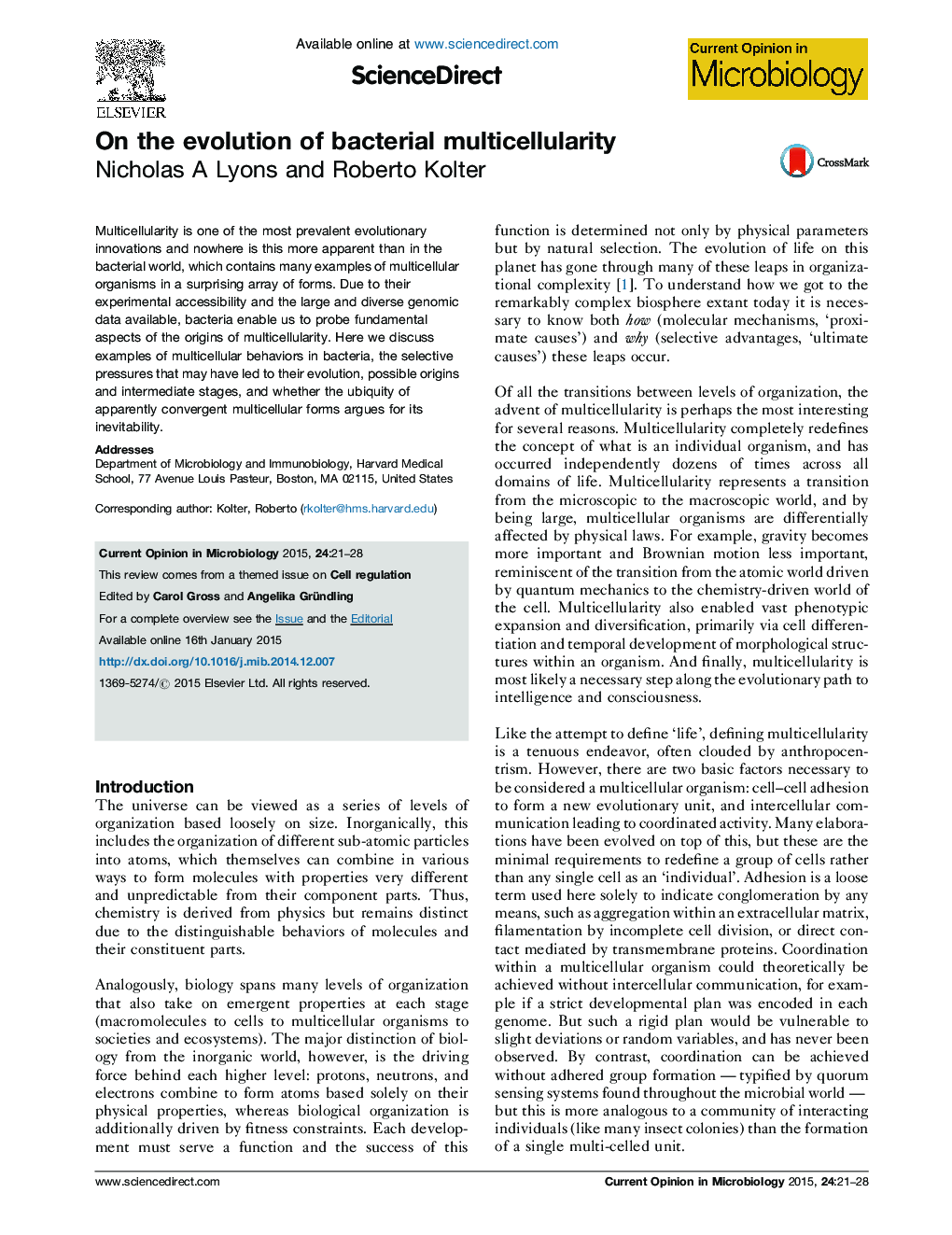| Article ID | Journal | Published Year | Pages | File Type |
|---|---|---|---|---|
| 3399048 | Current Opinion in Microbiology | 2015 | 8 Pages |
•Many bacteria have multicellular lifecycle phases, falling into three broad categories.•Predation, nutrient scarcity, and environmental variability may have led to multicellularity.•Despite many shared features, current evidence suggests each instance evolved independently.•Rapid and repeated evolution of multicellularity suggests it could be common in the universe.
Multicellularity is one of the most prevalent evolutionary innovations and nowhere is this more apparent than in the bacterial world, which contains many examples of multicellular organisms in a surprising array of forms. Due to their experimental accessibility and the large and diverse genomic data available, bacteria enable us to probe fundamental aspects of the origins of multicellularity. Here we discuss examples of multicellular behaviors in bacteria, the selective pressures that may have led to their evolution, possible origins and intermediate stages, and whether the ubiquity of apparently convergent multicellular forms argues for its inevitability.
